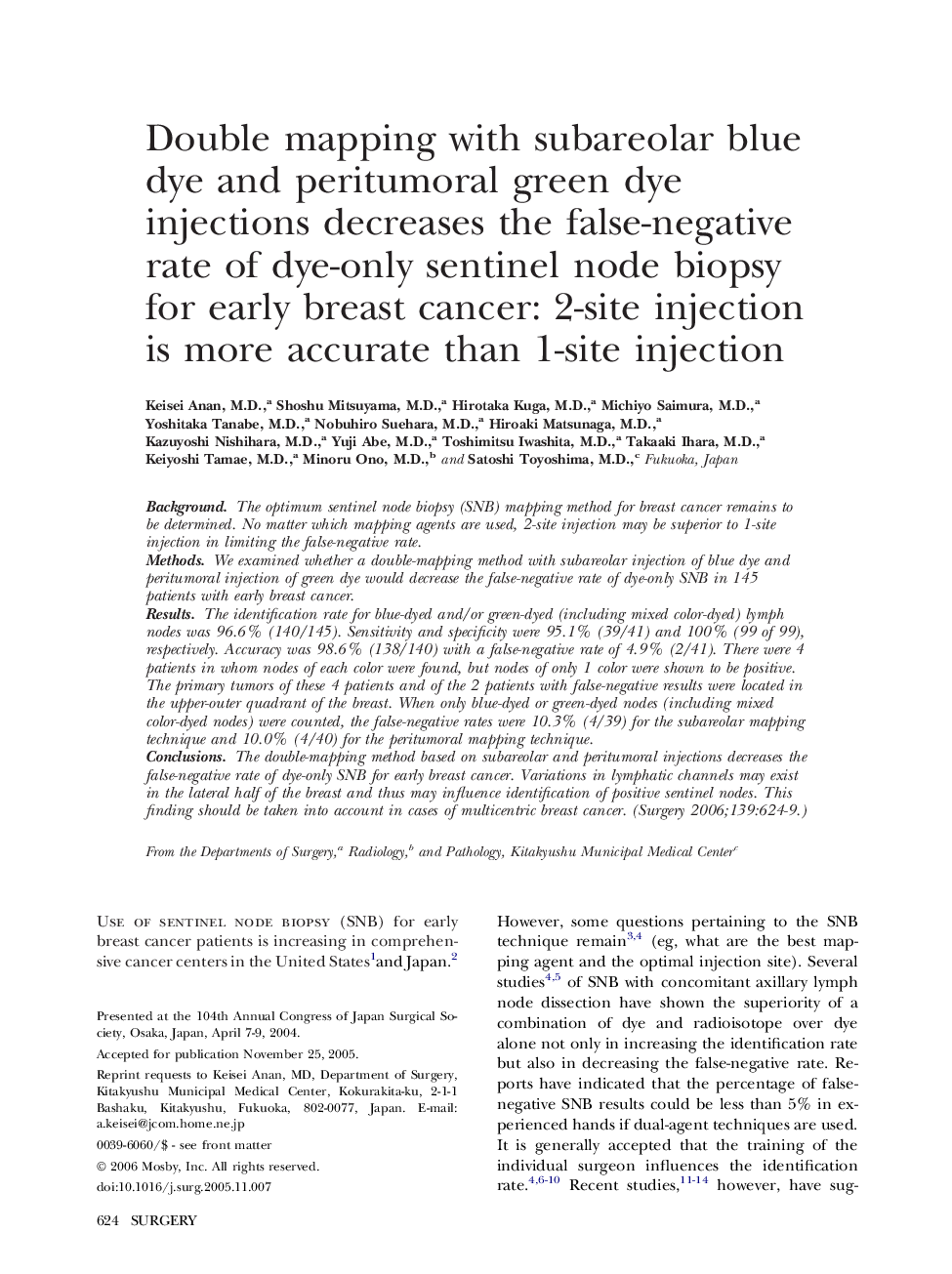| Article ID | Journal | Published Year | Pages | File Type |
|---|---|---|---|---|
| 4310072 | Surgery | 2006 | 6 Pages |
BackgroundThe optimum sentinel node biopsy (SNB) mapping method for breast cancer remains to be determined. No matter which mapping agents are used, 2-site injection may be superior to 1-site injection in limiting the false-negative rate.MethodsWe examined whether a double-mapping method with subareolar injection of blue dye and peritumoral injection of green dye would decrease the false-negative rate of dye-only SNB in 145 patients with early breast cancer.ResultsThe identification rate for blue-dyed and/or green-dyed (including mixed color-dyed) lymph nodes was 96.6% (140/145). Sensitivity and specificity were 95.1% (39/41) and 100% (99 of 99), respectively. Accuracy was 98.6% (138/140) with a false-negative rate of 4.9% (2/41). There were 4 patients in whom nodes of each color were found, but nodes of only 1 color were shown to be positive. The primary tumors of these 4 patients and of the 2 patients with false-negative results were located in the upper-outer quadrant of the breast. When only blue-dyed or green-dyed nodes (including mixed color-dyed nodes) were counted, the false-negative rates were 10.3% (4/39) for the subareolar mapping technique and 10.0% (4/40) for the peritumoral mapping technique.ConclusionsThe double-mapping method based on subareolar and peritumoral injections decreases the false-negative rate of dye-only SNB for early breast cancer. Variations in lymphatic channels may exist in the lateral half of the breast and thus may influence identification of positive sentinel nodes. This finding should be taken into account in cases of multicentric breast cancer.
